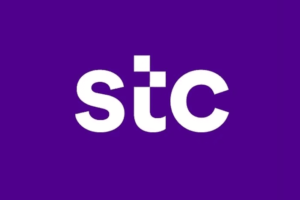By Hartwig Tauber, Director General, FTTH Council Europe
May 10th will see Europe’s healthcare policy makers gathering in Hungary for eHealth week, seeking answers to a pressing question: How can health service providers use information and communication technologies to cut the rising cost of healthcare delivery and improve service at the same time?
Policy makers recognize the need to act. Demographic changes mean they increasingly struggle to balance growing healthcare costs with the need to reduce budget deficits.
The French statistical agency, INSEE, estimates that the number of people in France aged over 100 will grow by 2,000 a year between 2010 and 2046 and rise by 8,000 a year thereafter, thanks in large part to advances in medical care. But a long life isn’t the same as a healthy one.
According to OECD, the average life expectancy after the age of 65 in 2005-07 for the 27 EU countries was 15.9 years for men and 19.5 years for women. However, after the age of 65, men could expect to lead only a further 8.4 years of healthy life, falling to 8.1 years for women. A greying population is not the only source of pressure on the healthcare system. Europeans are also getting fatter. More than half of the total adult population across the European Union is now overweight or obese, leading to a rise in chronic illnesses such as diabetes. Little surprise that in 2008 EU countries spent, on average, 8.3{e1f18614b95d3cd6e4b3128e1cd15d99b042a60a5a19c19b7a8e07e7495efa10} of their GDP on health, up from 7.3{e1f18614b95d3cd6e4b3128e1cd15d99b042a60a5a19c19b7a8e07e7495efa10} in 1998.
The need to cut spending and adapt services to a rise in chronic illnesses pushes governments to move from a hospital-centric system towards providing remote care to patients’ homes or via local doctors’ offices. After all, the elderly and chronically ill tend to need regular monitoring rather than hospital visits and often prefer to reduce the travel and waiting time those visits entail.
Patients aren’t the only beneficiaries: Health authorities would reduce the cost of out-patient administration and hospital stays; typically it costs several hundred euros to keep a patient overnight in hospital. In addition, hospitals could focus on the specialist and emergency care.
Telemedicine systems, for example, enable patients to go to their local doctor’s office and link via high-speed broadband to a hospital consultant to discuss test results, such as MRI scans. Hospitals, meanwhile, greatly reduce the administrative cost of managing out-patients and make more efficient use of consultants’ time.
Equally, patients who are undergoing physiotherapy can use physical re-education systems that run over high-speed broadband at home to practice correct movements, with imaging sensors picking up any mistakes. Again, patients who are semi-mobile cut down on hospital trips and gain a sense of control over the progress of their treatment. Patients also benefit by being in the comfort of a home environment, where they can draw on the support of family.
Such innovation in providing medical care does not require investments in complex customer premise equipment. High quality video-conferencing that runs on TV sets can provide an easy-to-use solution for patients who have a fibre to the home connection that offers high delivery speeds both downstream and upstream, allowing interactive services.
Indeed services over Fibre to the Home (FTTH) networks in Sweden, Portugal and the Netherlands illustrate how patients and healthcare providers easily deploy very high-speed broadband coupled with TV sets and PCs to reduce spending and improve care.
In Sweden the Nurse Gudrun care channel relies on FTTH to provide patients with online video consultations over their TV sets, thereby reducing out-patient visits. At the time of the launch, the Nurse Gudrun service provided online consultations at one sixteenth of the cost of a hospital visit.
Portugal, which encouraged FTTH investment, is now able to undertake the digitalisation of its entire healthcare system to reduce costs and improve care. Portugal Telecom, for example, helped develop a system that lets doctors share diagnosis with their peers in national and international hospitals, thereby improving their decision-making process. Portugal Telecom’s eHealth system has also enabled 10,000 remote consultations since its launch. Other eHealth services include developing communication networks between sufferers of rare or serious diseases, thereby reducing patients’ sense of isolation.
In the Netherlands, the town of Nuenen, which has one of the world’s highest FTTH densities, has linked its elderly population over high-speed networks to create a video-based platform of community exchange, which reduces loneliness.
Such services are altering for the better the way communities care for the sick and elderly. However, they are only viable because a sizeable percentage of the population – at least 20{e1f18614b95d3cd6e4b3128e1cd15d99b042a60a5a19c19b7a8e07e7495efa10} – has access to the home fibre infrastructure that turns platforms of exchange, such as high definition video conferencing, into an affordable and secure reality.
Today governments want to reap the financial and social benefits of eHealth. Many, however, have yet to facilitate the construction of the FTTH infrastructure on which the next century of healthcare delivery will depend. When healthcare ministers sit down in Hungary, they should bear in mind that the answer to their questions will come more easily once they have a future-proof, nationwide FTTH infrastructure in place.







